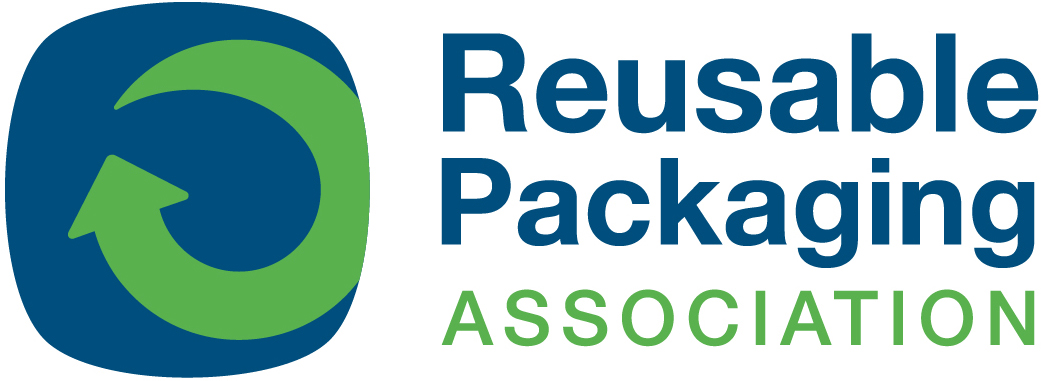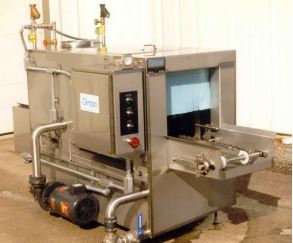As conversations grow around introducing more reusable packaging models for consumer products, particularly for food and beverage items, questions naturally arise about how best to clean and sanitize packaging between uses to ensure they are safe. Some of those questions are more direct: can it even be done? Members of the Reusable Packaging Association (RPA) who serve the global transport packaging market that includes fresh produce and protein producers, food processors, beverage makers, and wholesalers and retailers, have the answer:
Yes.
As proof, they offer up the billions of reusable packaging products such as reusable plastic containers (RPCs), bins, trays, totes, racks, and pallets cleaned and sanitized on a regular basis, many between every use, that safely pack and transport a broad array of products from fresh fruits and vegetables to prepared foods and baked goods from point A to B without a hitch. And this track record of safe use includes one of the most challenging times in modern history, the global COVID-19 pandemic.
Before we dive into how commercial reusable containers are sanitized, let’s look at the basics.

Out feed washing machine for reusable bins from Brüel Systems
Superior package hygiene starts with industry leaders. Some might say RPA and its members wrote the book on modern safe handling of food packaging containers. In March 2015, the RPA published Guidelines and Best Practices for the Sale Use of Returnable Containers in the Food Supply Chain that outlined protocols for washing, handling, storing, packaging, labeling, displaying, and collecting reusable containers. RPA members are encouraged to lead food safety efforts by following prescribed cleaning and testing methods and deploying advanced industrial washing operations that meet or exceed regulations established by government agencies, where applicable.
Reusable packaging products for food distribution are made primarily of polypropylene (PP) and high-density polyethylene (HDPE) plastics, and from a performance perspective, are up to the task of frequent washing. PP and HDPE are preferred materials because of resistance to common supply chain contamination issues that arise from moisture or humidity such as mold and mildew. The strong, durable, and water-resistant attributes are important as reusable containers are cleaned and sanitized between each use with modern industrial wash procedures using effective and safe detergents and disinfectants.
Food packaging can be used in a multitude of challenging environments and is naturally exposed to outside elements from things we can see such as dirt and grease to things we can’t like microorganisms. In the case of popular RPCs, for example, they have often pooled assets operated by a company dedicated to quality performance and safety. RPCs can be used upwards over 100 times each and must be sanitized and free of contaminants between use for food and beverage products.
Sound difficult? Not to industry leaders like IFCO Systems and Tosca Global. Both companies are major providers of sustainable packaging solutions such as pooled RPCs across the food product spectrum. Not to plastic and composite pallet poolers such as iGPS and RM2 that supply and service pallets for the transport of food product unit loads. And certainly not difficult to companies like Brüel Systems, Numafa Cleaning & Automation, Girton Manufacturing, and Hobart that manufacture high-performing industrial-grade wash equipment and conveyor systems favored y RPC and pallet companies. Let’s take a closer look.
Reusable plastic containers lead the way
Between IFCO Systems and Tosca, two global leaders in RPCs, they collectively perform more than 2 billion wash cycles each year. That breaks down to 166 million wash cycles per month or 5.5 million per day. That’s an incredible amount of washing. This intense focus on sanitizing RPCs is an integral component of both companies’ value equation to their food industry customers that look to them to remove contaminants and kill germs between uses.
RPC for Seafood from Tosca
The cleaning process is not as simple as wash, dry, and go. Both companies employ a science-backed matrix of four variables: temperature, concentration, contact time, and agitation. Used together, these variables effectively remove debris, residue, and contaminants of all types and help ensure the RPCs are cleaned according to the highest food safety standards and strictly enforced global hygiene and sanitation standards. And both companies employ third-party experts to validate their sanitation processes and results.
Video of IFCO’s SmartCycle Wash Process
Process consistency is key. Every IFCO RPC undergoes the same SmartCycle™ cleaning process whether in San Antonio, Texas, or Dusseldorf, Germany. The company also electronically monitors its cleaning processes using SmartGuardian™, a proprietary wash process control system. The data generated is used to monitor and validate the process. In addition to the real-time operational controls, IFCO utilizes sophisticated multi-layer testing and auditing processes to confirm the effectiveness and provide ongoing quality assurance. This consists of auditing and testing at each wash site including daily ATP swabbing providing real-time actionable results, weekly bacterial swabbing plus quarterly and annual third-party food safety audits.
Tosca’s wash process also follows a certified Food Safety Management System. They have also invested in Hygiena’s microbial detection, monitoring, and identification testing equipment which provides rapid results on the presence of salmonella, Enterobacteriaceae, and other bacteria and enables Tosca to quickly conduct validation studies and seek and destroy events as well as enhance overall monitoring of their RPCs.
Sanitizing plastic and composite pallets
Reusable plastic and composite pallets, while they have far less direct food contact than RPCs, are still subject to rigorous cleaning practices. RPA members iGPS (plastic pallets) and RM2 (composite pallets) are washed based on the hygiene sensitivity of customers’ products. Pallet cleaning and drying is automated to ensure consistent results. The cleaning agents themselves are the same as those used by food processors for their production facilities and equipment. The typical process includes washing with a high-pressure mixture of the chemical agent and water in an automated washer at a temperature of 130° F, followed by a high flow rate freshwater rinse to remove residual cleanser. The final step is high-volume air drying. An option to chemical wash agents is heat sanitation at temperatures ranging from 160° to 180° degrees for specific exposure times. Regardless of which is employed, companies stringently control the processes and routinely swab post-sanitation to confirm acceptable hygiene levels.
Video of RM2’s Composite Pallet Wash Process
The food safety washing workhorses
Behind every successful food industry-focused, RPC and pallet company are the washing workhorses behind food safety: the Brüel Systems, Numafa Cleaning & Automation, Girton Manufacturing, and Hobart that manufacture the industrial cleaning machines capable of sanitizing everything from simple crates to more sophisticated totes. These companies have designed systems to address the wash needs of niches within the food industry such as the meat and fresh produce industries.
In addition to providing equipment to meet sanitation and hygiene requirements, these companies also address resource efficiency to optimize the use of water, detergents, heat, and electricity. Automation is also critical. For IFCO and Tosca to wash 5.5 million RPCs a day, they need tunnel washers, container and bin washes capable of 6,000 units per hour or more—and meet exacting hygiene metrics on every unit washed. It’s a huge challenge these companies and their equipment conquer day in and day out.
Tunnel-style washing machine from Brüel Systems
Reusable bin washer by Numafa
Dairy case washer by Girton
Industrial tote washer by Hobart
The impact of COVID-19
There’s no question the global pandemic disrupted supply chains. However, thanks to deeply embedded and strictly followed sanitation processes, RPA member companies have not had to significantly alter existing wash and disinfection protocols. What did change was additional attention placed on cleaning high-traffic areas such as hallways, break rooms, training areas, and restrooms to reduce the risk of exposure to the virus.
Additionally, the companies limited the number of visitors to their sites, deployed shift segregation programs, encouraged social distancing during breaks, meals, and shift changes; and implemented business continuity measures in the event they experienced outages in their operations, supply, or labor related to COVID-19. Neither company experienced major disruptions, and both have continued to provide safe, hygienic RPCs to customers throughout the pandemic.
Leading the way by inviting others to join us
Reusable Packaging Association is justifiably proud of the sanitation experience, performance, and assurance from our member companies to help ensure food safety across the world’s supply chains. Our members are models for what safe reusable packaging, whether industrial or consumer, should be. We as an industry welcome the opportunity to discuss and share the best practices that we have established with consumer packaging companies eager to get on the reusable packaging bandwagon. With the goal of closing the loop on packaging, it’s in all of our best interests and that of the planet to lead and invite others to join us.







